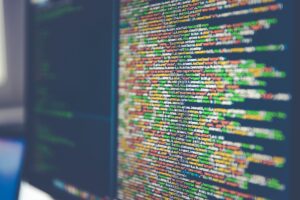Elements Of Statistical Learning: An Introduction
Updated: June 19, 2024
Published: April 12, 2021

If you’re interested in a career as a data scientist and you’re in the research phase of the field, then you may have come across the term ‘statistical learning.’
There are many professional data scientists who also don’t know the definition of statistical learning and how it differs from other types of learning, such as machine learning. Still, this is an important topic to be aware of if you’re preparing to work in the field of data science.
In this article, we’ll go over the definition of statistical learning, how it works, the differences between it and other types of learning, as well as what you can expect to learn about it in a course. Let’s dive right in.

What Is Statistical Learning?
According to the Wikipedia article on the topic, statistical learning is “a framework for machine learning drawing from the fields of statistics and functional analysis.”
In other words, statistical learning uses techniques that allow data scientists to better understand the data they work with.
When data scientists look at data, there are two types of data that they consider: independent variables and dependent variables.
An independent variable refers to data that can’t be controlled, and a dependent variable is something that you have more control over.
As a data scientist, your job is often to better understand data so that you can discover how independent and dependent variables work together and function as a result of one another.
Where statistical learning comes in is to reveal concealed data about the particular relationship between both types of variables. Statistical learning uses mathematical concepts and machine learning to create hypotheses based on the data.
How Does Statistical Learning Theory Work?
In order to better understand how statistical learning works, it’s important to look at it in practice. Essentially, the goals of statistical learning are to make machine learning more reliable so that it’s able to reproduce outcomes.
How this is done is by using a statistical definition to outline concepts that are considered obscure or abstract.
Data analysts and scientists test one thing at a time in order to test out their hypotheses and create new algorithms. They accomplish this by first spending time observing a specific phenomenon, then constructing a model of it, and finally using that model to make more precise predictions.
While it seems like this process can take a while, the goal with statistical learning is to automate it so that a program on a computer can learn from it. As the computer does this multiple times and processes more and more data, it will eventually improve the accuracy of its predictions in order to optimize solutions.
Statistical Learning vs Machine Learning

We’ve mentioned machine learning a few times here, and while elements of statistical learning and machine learning are similar, there are some key differences between the two concepts.
For starters, machine learning looks at data that doesn’t have explicitly programmed instructions, whereas statistical learning focuses on rule-based programming, as we saw before.
In general, statistical learning is based on smaller sets of data, and machine learning can analyze huge multitudes of observations. That also means that statistical learning is more focused on math in order to arrive at solutions, but machine learning looks at patterns in the data to draw conclusions.
Here are some of the main differences between statistical learning and machine learning:
- Statistical learning looks at assumptions whereas machine learning doesn’t focus too much on assumptions and often ignores them.
- Statistical learning is mainly about inferences, in other words, a conclusion is reached through reasoning, but machine learning looks at different factors like predictions, and both supervised and unsupervised learning.
- Statistical learning is based on math that looks at the coefficient estimator and relies on having a solid understanding of your data, but machine learning looks at patterns within a dataset, which therefore requires a lot less human effort.
What Will You Learn in a Statistical Learning Course?
Regardless of whether or not you plan on working closely with statistical learning in your career as a data scientist, it can still be interesting and even beneficial to learn about it in a course.
In a statistical learning course, you can expect to learn about different classification methods that will help you understand the topic.
Usually, statistical learning classes aren’t ultra-focused on math and they do try and look at the methods without using heavy math formulas. You can expect to complete tutorials on different methods of statistical learning as well as how to implement techniques.
In a statistical learning syllabus, here are some of the topics you can expect to learn about:
- Logistic regression
- Linear and polynomial regression
- Model selection and regularization
- Nonlinear models
- Tree-based methods
- Support-vector machines
- Moving beyond linearity
- Resampling methods
- Classification
To Wrap Up
Statistical learning can be an exciting topic to study if you’re interested in pursuing a career in data science or you simply want to know more about it in order to apply it to your work and research. Getting a better understanding of statistical learning can also help you become better at working with machine learning.
If you’re at the start of your journey with data science or you’re considering which majors to study, then take a look at the different degree programs offered by University of the People. All the degrees are held online so that you can study remotely while still working on other projects. The best part is that all of our degrees are tuition-free, so no need to worry about budgeting.
